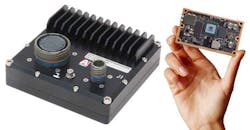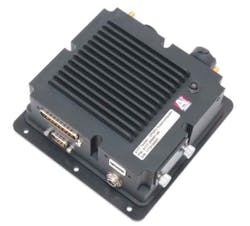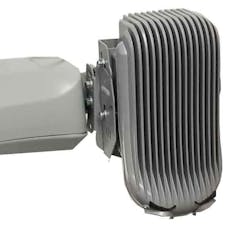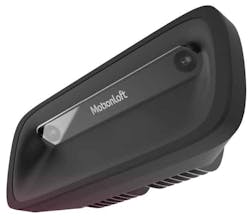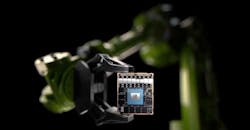NVIDIA’s Jetson family comprises compact modules that combine multiple ARM cores within SoCs that also include GPGPU and machine-learning (ML) accelerators. The modules are finding homes in everything from drones to robotics. They incorporate flash storage and DRAM for a complete system that features networking support. The modules can be mated with carrier boards, but rugged systems often require cases designed to handle those tougher environments.
Jetson TX1, TX2, and AGX Xavier are all supported by developer kits, and are all available as separate modules for designing into products. They are also supported by the same unified software stack. Their original development kits include development carrier boards; these aren’t really designed for deployment, but rather to expose all of the modules’ features. The carrier boards have storage-expansion options—for example, the AGX Xavier carrier board has a socket for an M.2 flash-memory drive.
Developers looking to put NVIDIA’s Jetson TX1 or TX2 module into a military drone might want to check out AITech’s A176 Cyclone fanless, rugged supercomputer (Fig. 1). The TX1 and TX2 share the same form factor. Aitech’s system includes an isolated power supply, a pair of mini-PCI Express (mini-PCIe) sockets, and a Mini SATA solid-state disk drive with secure and quick erase options.
1. NVIDIA’s Jetson TX2 module (right) is at the heart of Aitech’s A176 Cyclone rugged supercomputer (left).
The lower-cost Aitech A177 Twister supports NVIDIA’s Jetson TX1 and TX2 and incorporates more connectors for Wi-Fi antennas (Fig. 2). There’s a plate that exposes the removable solid-state storage. The A177, which is environmentally sealed to level IP67, contains two internal mini-PCIe sockets.
2. Aitech’s A177 Twister brings NVIDIA’s Jetson TX1 and TX2 to rugged industrial environments.
Quite a few rugged applications employ Jetson TX1 and TX2 modules. For instance, Verizon’s smart-city lighting augmentation pairs one of these modules with low-light cameras (Fig. 3). This allows the software to handle ML applications at the edge. These smart camera systems can be mounted next to light fixtures to cover the area around the pole. Cellular communication can be used to upload information to the cloud.
3. For smart-city support, Verizon leverages NVIDIA’s Jetson family in vision-sensing systems that are attached to streetlight fixtures.
Verizon uses NVIDIA’s Jetson TX2 to analyze and identify objects at the edge without needing to upload video to the cloud (Fig. 4). It can identify cars and bikers without needing to send video to the cloud, thereby reducing bandwidth requirements. Traffic and parking information are delivered using a fraction of what a video stream would require. It also provides surveillance information while addressing privacy concerns since the raw video isn’t sent to the cloud.
4. Verizon uses NVIDIA’s Jetson TX2 to analyze and identify objects at the edge without needing to upload video to the cloud.
MotionLoft is another company that’s putting Jetson TX2 up on a light pole with a set of cameras (Fig. 5). This will address smart-city applications like the Verizon system, as well as other application areas such as real estate and retail. Its ViMo sensor can track vehicles and people, and can determine the dwell time of entities at a location and what type of traffic is occurring at different times. The sensor only needs a 110-VAC outlet nearby.
5. MotionLoft uses the Jetson TX2 to analyze streaming video from its 3D cameras.
The systems already mentioned take advantage of the Jetson TX1 and TX2. NVIDIA’s Jetson AGX Xavier (Fig. 6) packs more computing power than the Jetson TX2, but with a new, slightly larger form factor. The lack of plug-in compatibility means developers will need new systems to handle the larger module. These are on the way since the Jetson AGX Xavier packs in significantly more computing power. It allows the system to handle twice the number of video streams. Overall, the Jetson AGX delivers over 20X the performance of Jetson TX2.
6. The NVIDIA Jetson AGX Xavier packs more computing power than the Jetson TX2 in a slightly larger form factor.

